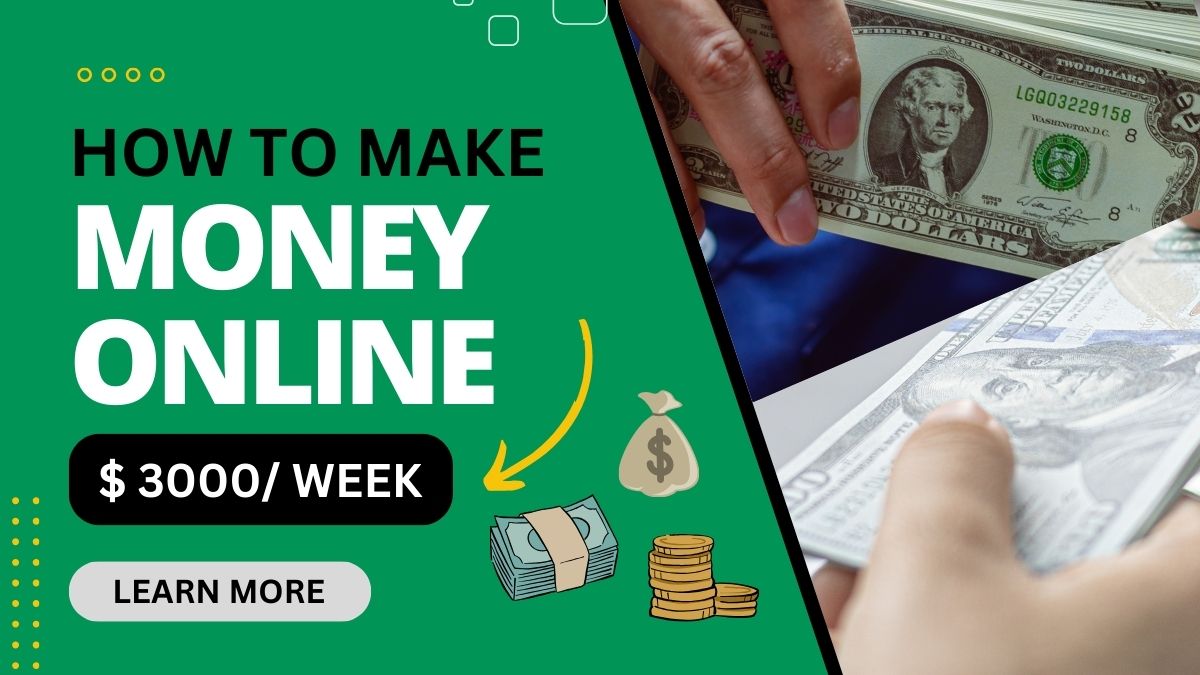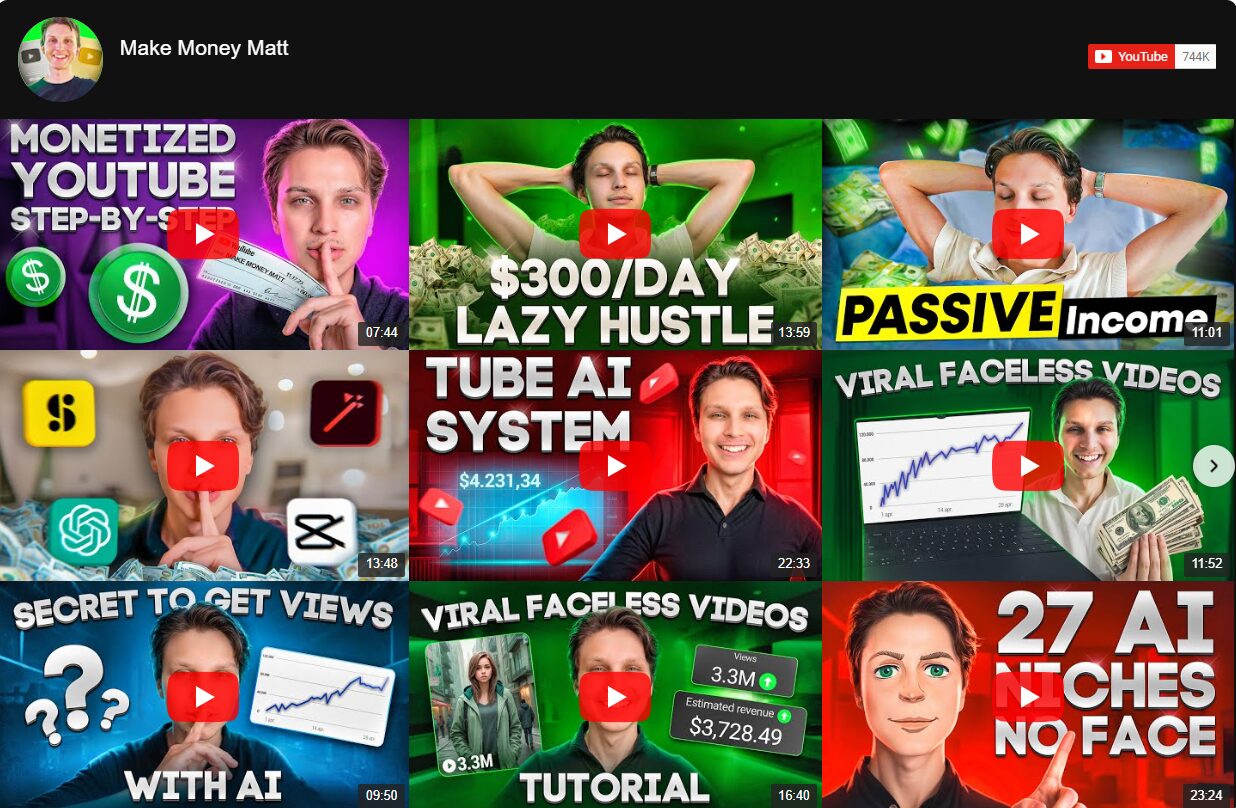
YouTube has transformed from a simple video-sharing platform into a thriving ecosystem where creators can generate substantial income. Whether you’re a budding content creator or an established YouTuber looking to increase your revenue, understanding the various monetization methods is key to maximizing your earnings. In this article, we’ll explore how you can make money on YouTube and delve into the factors that influence how much you can earn.
Table of Contents
ToggleHow to Make Money on YouTube?
Turn on Ads for Your Videos
One of the most common ways to make money on YouTube is by enabling ads on your videos. To qualify for this, your channel must meet YouTube’s Partner Program requirements, which include having at least 1,000 subscribers and 4,000 watch hours in the last 12 months. Once you’re accepted, ads can be displayed before, during, or after your videos. The revenue you earn from ads depends on factors such as the number of views, viewer demographics, and the types of ads displayed.
Channel Memberships
Channel memberships allow your most loyal fans to support you directly. Viewers can pay a monthly fee in exchange for perks like exclusive badges, emojis, and members-only content. This steady stream of income is a great way to monetize your audience beyond ad revenue. It’s particularly effective for channels with a dedicated fanbase who are willing to pay for extra content and interaction.
Advertising Revenue
Advertising revenue isn’t just limited to standard video ads. YouTube offers several types of ads, including display ads, overlay ads, skippable video ads, non-skippable video ads, bumper ads, and sponsored cards. Each ad type has its own revenue model, and the amount you earn will vary based on factors like your audience’s location, engagement, and the overall demand for your niche. Maximizing your ad revenue requires a strategic approach, including experimenting with different ad formats and understanding your audience’s preferences.
YouTube Shorts Monetization
With the rise of short-form content, YouTube has introduced monetization options for YouTube Shorts. Creators can earn revenue through the YouTube Shorts Fund, a pool of funds set aside by YouTube to reward creators for their short videos. Although the monetization options for Shorts are still evolving, they present an exciting opportunity for creators to tap into the growing trend of bite-sized content.
YouTube Shopping
YouTube Shopping allows creators to showcase products directly in their videos, creating a seamless shopping experience for viewers. By integrating your online store with your YouTube channel, you can promote your products and earn revenue from sales made through your videos. This is particularly beneficial for creators who have a strong brand or product line, as it provides an additional revenue stream while enhancing the viewer’s experience.
YouTube Premium Revenue
YouTube Premium is a subscription service that offers viewers an ad-free experience, access to exclusive content, and the ability to download videos for offline viewing. As a creator, you earn a portion of the revenue from YouTube Premium subscriptions based on how much Premium members watch your content. This is a valuable income source, especially if your channel has a high watch time among Premium users.
Use Affiliate Marketing
Affiliate marketing is a powerful tool for monetizing your YouTube channel. By promoting products or services in your videos and including affiliate links in your video descriptions, you can earn a commission on sales generated through those links. This method works well for creators who focus on product reviews, tutorials, or any niche where recommendations can lead to purchases. The key to success with affiliate marketing is to choose products that align with your audience’s interests and provide genuine value.
Work with Brands as an Influencer
Influencer marketing has become a significant revenue source for many YouTubers. Brands are eager to collaborate with creators who have a loyal following and can authentically promote their products or services. By partnering with brands, you can earn money through sponsored content, product placements, and brand collaborations. To attract brand deals, focus on building a strong personal brand, maintaining high engagement rates, and creating content that resonates with your audience.
Key Determining Factors in How Much YouTube Pays
Niche Channel
The niche of your channel plays a crucial role in determining your earnings. Some niches, like finance, technology, and beauty, tend to attract higher-paying advertisers, resulting in higher revenue per view. On the other hand, niches with less advertiser demand may have lower ad rates. Choosing a profitable niche that aligns with your interests and expertise is essential for long-term success on YouTube.
Audience Engagement
Engagement metrics such as likes, comments, shares, and subscriptions are indicators of how invested your audience is in your content. High engagement not only signals to YouTube’s algorithm that your videos are valuable, but it also attracts advertisers looking for active and engaged audiences. The more engaged your audience is, the higher the potential for earning through ads, memberships, and brand partnerships.
Ad Types
The type of ads displayed on your videos can significantly impact your revenue. For instance, skippable video ads may generate less revenue compared to non-skippable ads, as viewers have the option to skip them. Similarly, display ads and overlay ads might have lower earning potential than video ads. Understanding the different ad types and how they perform on your channel can help you optimize your ad strategy for maximum earnings.
Geographical Location
The geographical location of your audience affects how much you earn per view. Advertisers often pay more for views from countries with higher purchasing power, such as the United States, Canada, and the United Kingdom. Conversely, views from regions with lower ad rates may generate less revenue. To maximize your earnings, it’s beneficial to target audiences in high-paying regions, if possible.
Video Quality and Length
High-quality videos are more likely to attract and retain viewers, which in turn increases your potential for earning. Additionally, longer videos have the advantage of allowing for more ad placements, such as mid-roll ads, which can boost your revenue. However, it’s important to strike a balance between video length and content quality, as unnecessarily long videos may lead to viewer drop-off.
Watch Time
Watch time is one of the most critical metrics for YouTube’s algorithm. The more time viewers spend watching your videos, the more likely your content is to be promoted by YouTube. High watch time not only improves your channel’s visibility but also increases the likelihood of earning more from ads and YouTube Premium revenue.
Video Topic
The topic of your videos can also influence how much you earn. Certain topics naturally attract more viewers and advertisers, leading to higher revenue potential. For example, educational content, how-to guides, and trending topics often perform well in terms of views and ad revenue. When choosing video topics, consider what is currently popular or in demand within your niche.
Channel Monetization Status
Your channel’s monetization status determines whether you can earn money from ads, memberships, and other revenue streams. Ensuring that your channel remains in good standing with YouTube’s policies is crucial for maintaining your monetization privileges. Regularly reviewing YouTube’s guidelines and adhering to best practices can help you avoid issues that could impact your earnings.
YouTube Shorts
YouTube Shorts are a new and rapidly growing content format on the platform. While monetization options for Shorts are still developing, the potential for earning through this format is significant. Shorts can help you reach a broader audience, increase your channel’s visibility, and potentially drive more revenue through other monetization methods like ads and brand deals.
FAQs About Making Money on YouTube
1. How much money can you make on YouTube?
The amount varies widely. Some YouTubers make a few dollars a month, while top creators earn millions annually. It depends on factors like your audience size, engagement, and revenue streams.
2. What types of videos make the most money on YouTube?
Videos in niches like tech reviews, finance, and education often earn more due to higher CPM (cost per thousand views) rates. However, the most important factor is creating content that your audience loves.
3. Do I need expensive equipment to start a YouTube channel?
No, you can start with basic equipment like a smartphone camera and free editing software. As you grow, you can invest in better equipment to improve your video quality.
4. Can I make money on YouTube without showing my face?
Yes, many creators make money with voice-over videos, animations, or screen recordings. The key is to provide valuable content that resonates with your audience.
5. How long does it take to start making money on YouTube?
It depends on your content, consistency, and marketing efforts. Most channels take at least 6-12 months to meet the YouTube Partner Program requirements and start earning.



